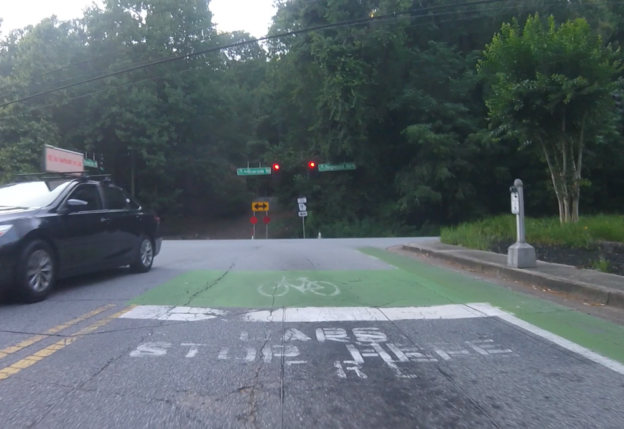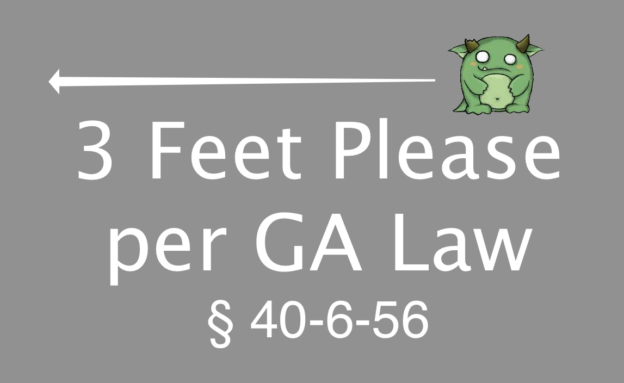Also filed under “They don’t pay fuel taxes”
Since the subject of bicycles is in the public eye again due to upcoming law changes, many of the old anti-bike arguments are also raising their heads again. To the point that there are at least two concerned citizens that have decided to push the bicycle tag and tax issue with the state legislature. While it is unlikely that those minds of the people behind those efforts will be changed, it is probably still worth discussing the realities of this idea and proposal.
Why Do People Think This Matters
There are two very different and divergent reasons that are presented in this context. Both are arguably suspect and despite the logical foundations in both, they both struggle to hold up under analysis.
Tags Would Allow For Reporting and Enforcement
As any person that has ever filed a non-contact/non-crash related motor vehicle moving violation other than speed police report can tell you, even with a completely clear license plate, there are several additional issues that prevent prosecution in most cases. Any report also needs to include video of the vehicle operator at the time of the incident.
Even with these bits of information, it is a low percentage of incidents that are pursued by law enforcement, and most of those result in little more than a verbal warning. Making this a very low value in terms of enforcement or altering behaviors.
Tag and Tag Taxes (ad valorem fees) Would Fund Bike Infrastructure
Or, would it? In Georgia for example, new cars no longer pay traditional annual ad valorem taxes. They pay sales tax. So, really, this is about the annual tag fees, and perhaps include the licensing fees., since bikes are also taxed at the point of sale ( at least new, there might be some value to second hand bike sales, but there is no infrastructure to track this ).
Either way, a bit of math can give an idea of just how much this idea might mean. Auto tags are $20 / year. Licenses are $32 every 8 years. That works out to $24 per year, per bicycle and licensed operator. Most estimates of the number of active bicycle users pegs the number at about 34% total. However, for adults, that number is typically 29%, and this type of approach is generally targeted at adult cyclists.
Georgia’s adult population is roughly 8.2 million. 29% of that is 2.4 million. At $24 per year, that would be just $57 million per year in revenue. For perspective, the state budget for transportation ( including non-car transportation ), and bear in mind, this is state roads only. It has low impact upon either federal highways, and cite/county transportation budgets, is just 7.27% of a $28.1 billion budget. Meaning 2 billion in state level transportation projects.
Needless to say, the revenue would not even cover the administrative costs of collection and enforcement, all while being an unfair usury tax upon the people that use a bike because they cannot afford a car, a number consistently demonstrated to be about 66% of bicycle users. A group of users that are also disproportionately at risk from car/bike crashes.
Neither Reason Is Justifiable
Then we get to the Fuel Tax complaint. This one holds up marginally better, right up until the discussion embraces the idea of wear and tear, and paying proportional the wear and tear created. Once this is factored in, it quickly becomes evident that there are entire classes of road users that are dramatically underpaying and being subsidized by all tax payers, and these users are not bicycles.
Roads require maintenance because of mother nature and road use. Moisture and temperature fluctuations are primary factors in the side of mother nature. Vehicular use compounds these factors, with weight and speed have direct impacts upon accelerating the break down of the roadways. The heavier, and faster the vehicles, the more damage they cause.
If you consider the ‘Average’ motor vehicle weight to by ~4000 lbs, and use that as a base line for a predicted wear value as the normal, then looking at vehicle weights and how the weight impacts wear and tear, the heaviest rider on the heaviest bike would have a wear factor of 0.00006. Meanwhile a Tesla Model S would be about a 1.3. What about a Chevy Tahoe at 3.6, or a BMW X5 at a factor of 17, or an Amazon Prime Mercedes Sprinter at a factor 21 when empty?
What this means is that every road user in a vehicle over 4000 lbs is underpaying compared to the damage they are causing, no matter how much gas they buy, and the electric vehicles are not even paying fuel taxes.
In fact, when you look more closely at all of this, it quickly becomes evident that the bicycle riders cannot produce enough wear and tear on a paved roadway to cause it to need repairs before mother nature does the work without them. Or more to the point, they are more than covering their fair share through other taxes.
Conclusion
So while, it all sounds good as a sound bite, and an emotional response, the idea of tag and taxes on bicycles boils down to little more than creating an artificial barrier to using bikes on the roads, and one that would be unable to fund adding bike specific infrastructure. But, making matters worse is the reality of the sport and recreational cyclists that these ideas are really trying to target.
Between the income levels of those riders, and the culture within those communities, if there was any plausible reason to believe that these tags and taxes would alter driver behaviors when there are bike/car encounters, then most would pay it, happily. Of course, it would not change drivers behaviors. This is known, because it has been tried, and failed.

